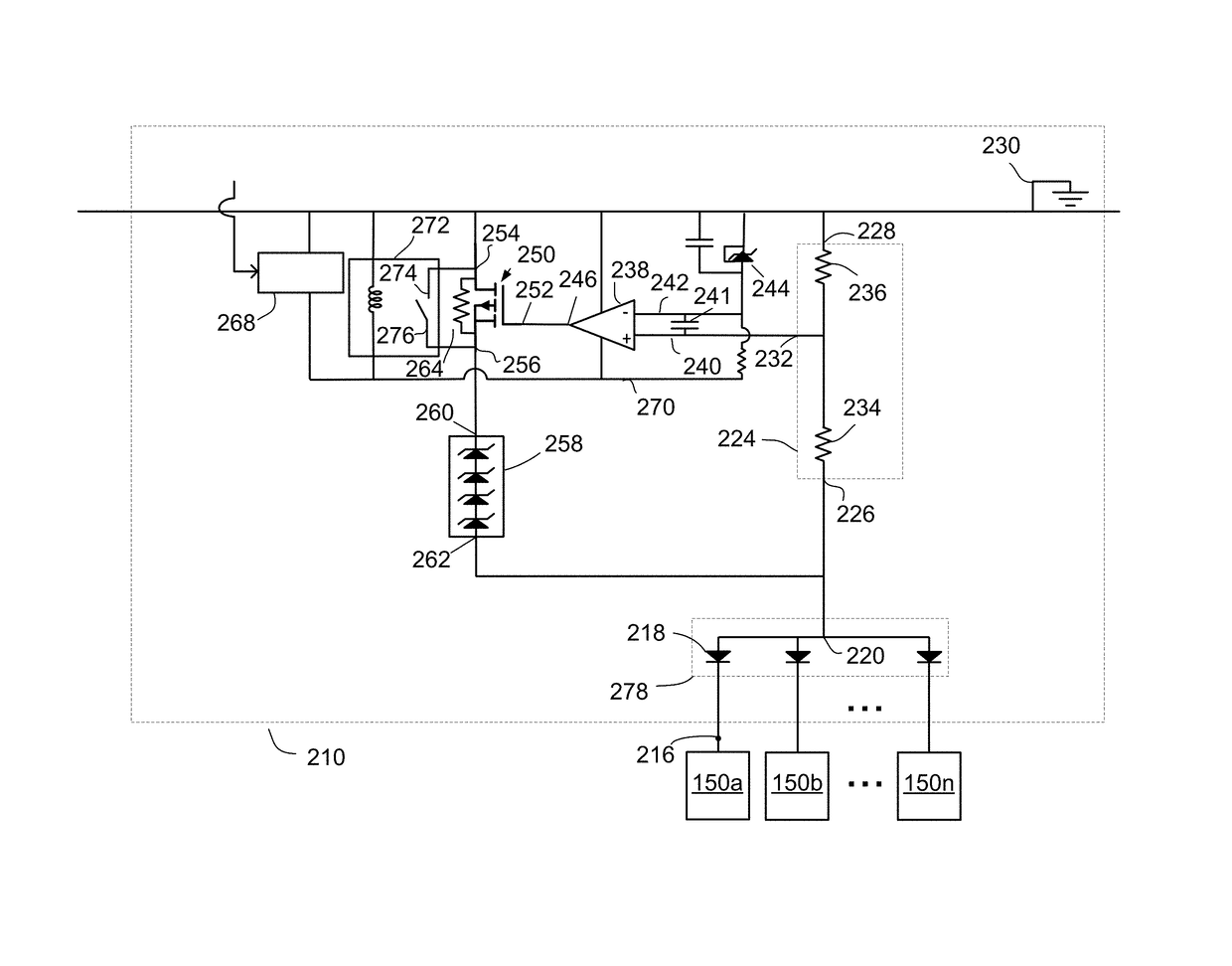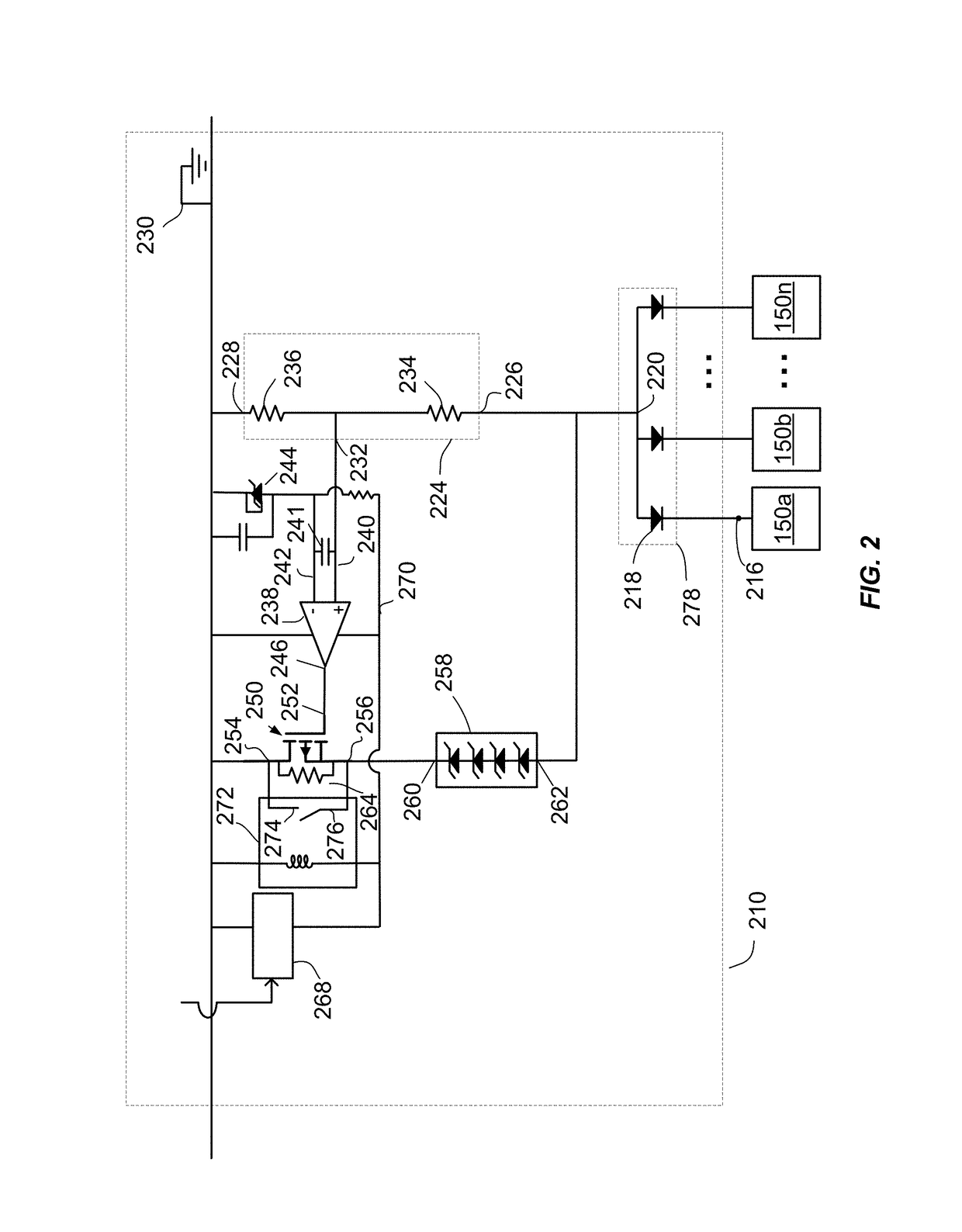Auxiliary circuit for overvoltage protection
a technology of auxiliary circuits and overvoltage protection, applied in emergency protective arrangements, electrical equipment, emergency protection arrangements for limiting excess voltage/current, etc., can solve problems such as electrical overstress damage, gate current may not be sufficient to trigger thyristor, and wiring subject to foreign electromagnetic disturbances
- Summary
- Abstract
- Description
- Claims
- Application Information
AI Technical Summary
Benefits of technology
Problems solved by technology
Method used
Image
Examples
Embodiment Construction
[0032]Embodiments described herein relate generally to auxiliary circuits for overvoltage protection. In some embodiments, the auxiliary circuits may be configured for use with conventional overvoltage protection devices. The auxiliary circuits provide protection against overvoltage events, particularly slow changing overvoltage events, that may not otherwise turn on the overvoltage protection device to clamp the voltage.
[0033]Embodiments in this application are described in relation to telephony systems, and in particular telephony systems using SLICs. These systems operate on a negative voltage framework. The embodiments are not limited to this particular application, however, and may be used with other systems that operate on a positive voltage framework by adjusting voltage ranges and thresholds.
[0034]FIG. 1 is a simplified diagram of an exemplary system 100 with which one or more embodiments of the present invention may be used. The SLIC 110 may be connected to an analog teleph...
PUM
 Login to View More
Login to View More Abstract
Description
Claims
Application Information
 Login to View More
Login to View More - R&D
- Intellectual Property
- Life Sciences
- Materials
- Tech Scout
- Unparalleled Data Quality
- Higher Quality Content
- 60% Fewer Hallucinations
Browse by: Latest US Patents, China's latest patents, Technical Efficacy Thesaurus, Application Domain, Technology Topic, Popular Technical Reports.
© 2025 PatSnap. All rights reserved.Legal|Privacy policy|Modern Slavery Act Transparency Statement|Sitemap|About US| Contact US: help@patsnap.com



